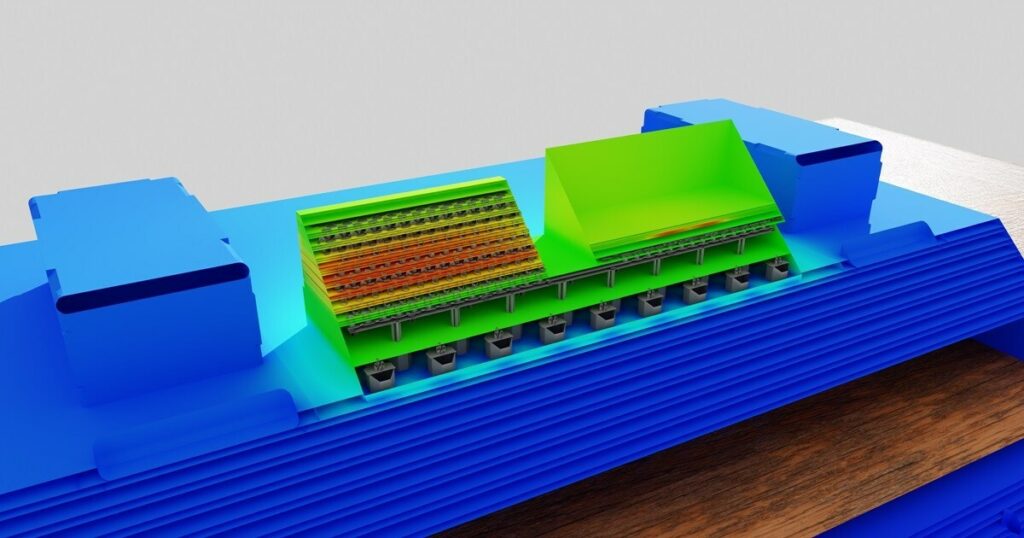
A field visualization of 3D-IC with Omniverse. (Image: Ansys, Inc./PRNewswire)
Integrating the NVIDIA Omniverse platform with existing Ansys capabilities will reportedly enable designers to optimize next-generation semiconductor chips to deliver faster data rates and increased functionality.
PITTSBURGH—Ansys reported that it is adopting NVIDIA Omniverse application programming interfaces (APIs) to offer three-dimensional integrated circuit (3D-IC) designers “valuable insights from Ansys’s physics solver results through real-time visualization.” NVIDIA Omniverse is a platform of APIs for developing OpenUSD- and NVIDIA RTX-enabled 3D applications and workflows.
Ansys said in a release that it is “ushering in the next generation of semiconductor system design to improve outcomes in applications such as 5G/6G, internet of things (IoT), artificial intelligence (AI), machine learning (ML), cloud computing, and autonomous vehicles.”
Three-dimensional integrated circuits, or multi-die chips, are vertically stacked assemblies of semiconductor chips. The compact form factor of a 3D-IC is said to provide significant performance gains without increasing power consumption. However, denser 3D-ICs complicate design challenges related to electromagnetic issues and the management of heat and stress. They also make tracing the origins of these problems more difficult, according to the release.
To understand the interactions between 3D-IC components for more advanced applications, 3D multiphysics visualization becomes a requirement for effective design and diagnostics, Ansys said in the release.
Ansys said its integration of NVIDIA Omniverse will deliver real-time 3D-IC visualization of results from Ansys solvers, including Ansys HFSS™, Ansys Icepak™, and Ansys RedHawk-SC™. This is reported to help designers interact with 3D models to evaluate critical phenomena, such as electromagnetic fields and temperature variations. The interactive solution allows designers to optimize next-generation chips to deliver faster data rates, increased functionality, and improved reliability, the company said.
“Advanced manufacturing relies on marrying the physical world with the digital,” said Prith Banerjee, chief technology officer at Ansys, in the release. “At Ansys, we are harnessing the power of the NVIDIA Omniverse platform to comprehensively simulate and design everything—from tiny semiconductors to the expansive factories where they are produced. Ansys tools, such as RedHawk-SC, already offer visualization features, which are integrated with Omniverse to unlock a new realm of potential.”
In addition to integrating Omniverse, RedHawk-SC is now accelerated by NVIDIA Grace CPU Superchips, helping it deliver more performant multiphysics designs.
“Accelerated computing, AI physics, and physically based visualization will drive the next era of industrial digitalization,” said Rev Lebaredian, vice president of Omniverse and simulation technology at NVIDIA, in the release. “Ansys semiconductor solutions connected to Omniverse Cloud APIs will help accelerate the electronics ecosystem’s design and engineering processes.”
